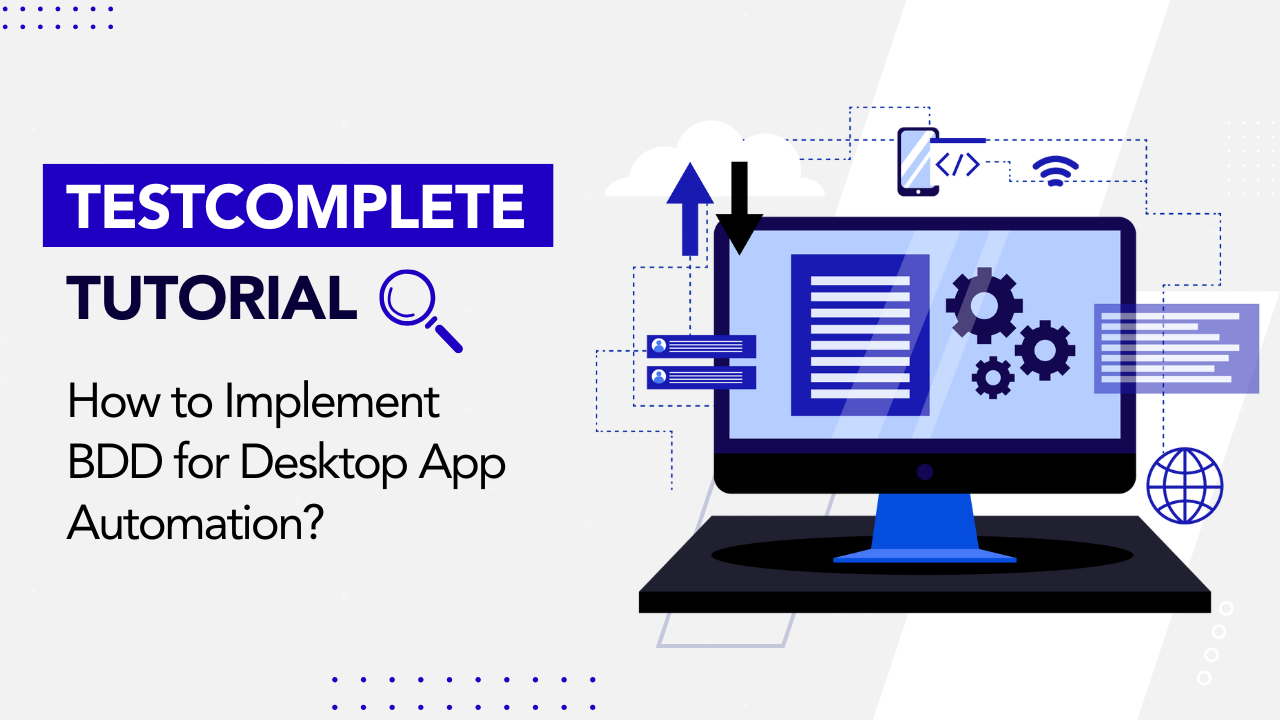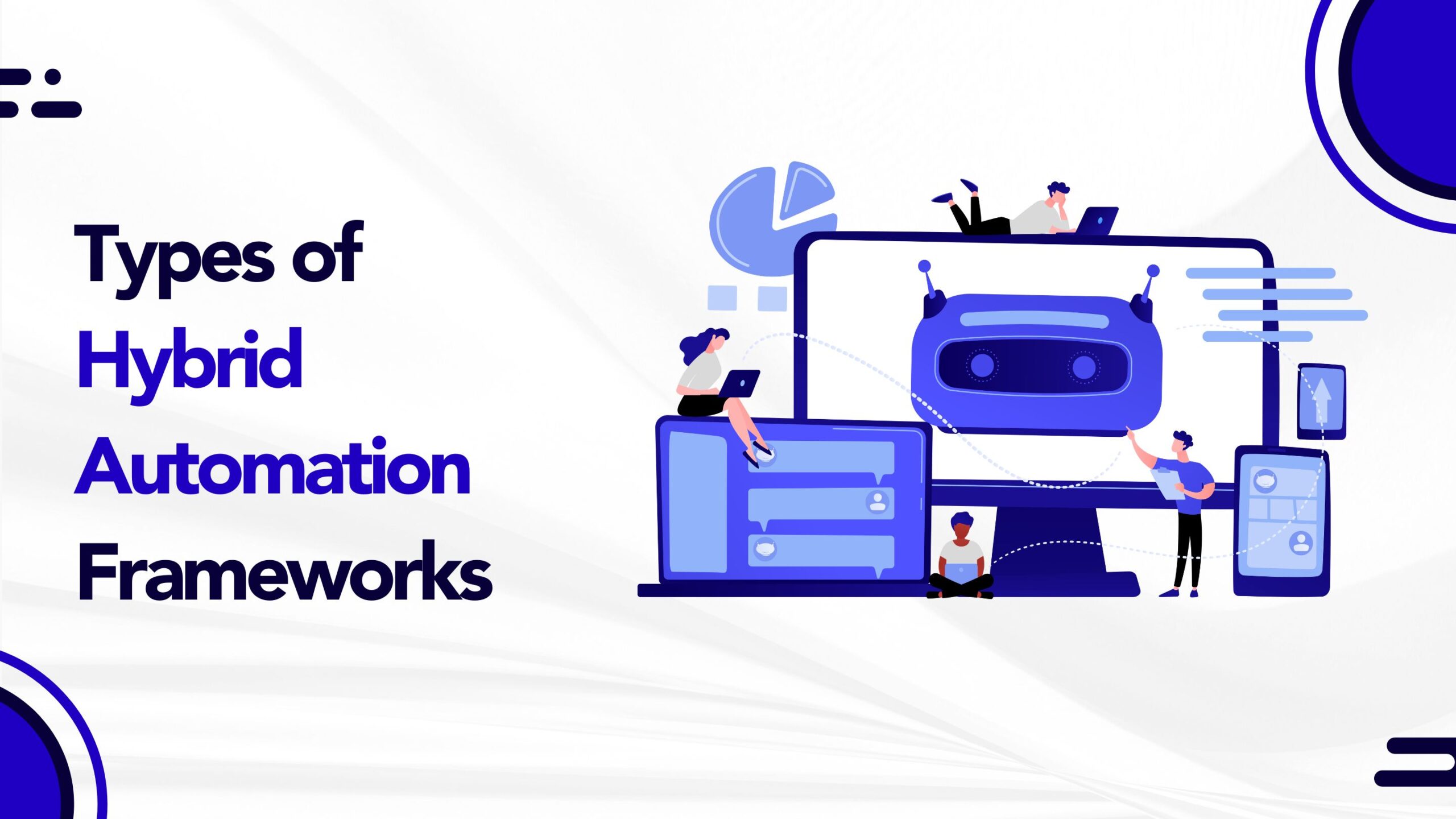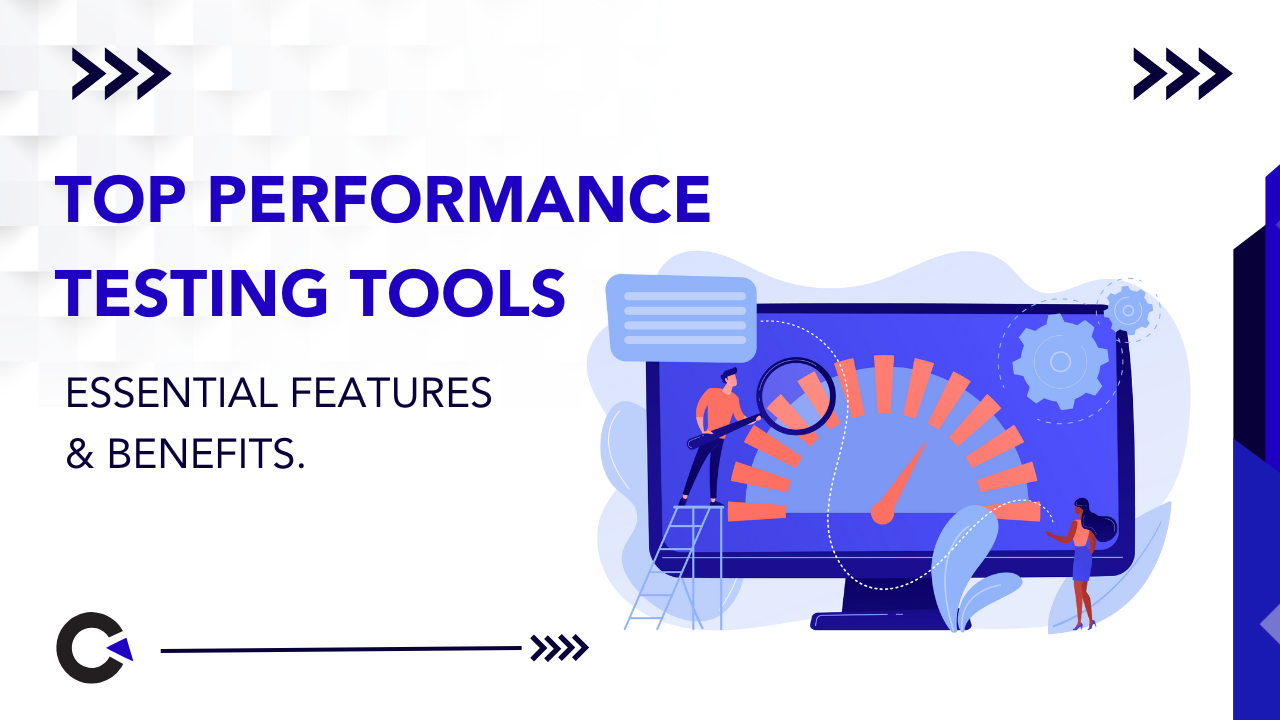
by admin | Oct 15, 2021 | Automation Testing, Blog |
Developing software products for tech-driven businesses is dominating the landscape. As the digital transformation continues to reform several industries, setting a fool-proof test automation strategy becomes more important than ever.
Satisfying customers and offering products that can guarantee better functionality for different work settings are goals that every software company should reach; that’s why it’s worth putting the spotlight on one of the most critical stages in the process: automation testing.
This phase reveals your performance, effectiveness, and inefficiencies that need improvement, so it begs the question: what are the key elements that ensure your mobile app test automation strategy is results-driven and successful?
Powerful Pillars that Build a Stronger Testing Automation Strategy
Factor #1: The Right Automation Testing Tools
The automation tools you use for your project will set the tone for your testing efforts. With that in mind, the first step to enhance your test automation strategy is to implement the best tools that meet your unique needs—be it mobile app testing tools, web application automation testing, and more.
There are no hard rules when it comes to selecting the best tools; you only need to choose the ones that deliver the required features and functionality that matches your testing requirements. Some of the best performing and cost-effective tools for testing automation include Test Complete, WAPT, Ranorex, and Microsoft Test Manager.
Factor #2: Type of Tests Included in an Automated Test Suite
Not all scripts and sequences in a new automation test suite are applicable for all products; that’s why your team needs to assess your current operations and deploy the right elements that will yield better results for your project without disrupting the functionality of your software.
Creating a testing pyramid can reveal stages in the process that are relevant to your new test case—from testing levels, role distribution, task ownership, and the appropriate frequency for your tests.
Factor #3: Standardized Automation Scripts
Starting from scratch when automation testing different software can eat up plenty of time, money, and development efforts, so supplementing your testing with reusable automation scripts can maximize your process. If you’re working on projects that follow the same outline, then reusing a standardized framework can do wonders for easing your team’s workload.
The Bottom Line: Breaking Down the Building Blocks of an Effective Test Automation Strategy
Testing your mobile application’s performance, functionality, usability, and user engagement can be tricky, especially since the process can be time-consuming and complex in more ways than one.
Improving your test automation strategy is an essential step in ensuring your software products exceed the market’s expectations, so collaborating with testing companies like Codoid can supercharge your strategy by ensuring your end-to-end testing goes as smoothly as possible.
How Can Codoid Help You?
If you’re looking for performance testing companies, Codoid is here to help you.
We are an industry leader in QA, leading and guiding communities and clients with our passion for development and innovation. Our team of highly skilled engineers can help your team through software testing meetup groups, software quality assurance events, automation testing, and more.
Learn more about our services and how we can help you today!

by admin | Oct 14, 2021 | Automation Testing, Blog, Latest Post |
Gecko is a browser engine for Firefox that has been in usage since the year 1998. But Gecko was initially developed and maintained by a company called ‘America Online’. In the year 2003, Mozilla Corporation took control of Gecko development. Since then, the Firefox browser has improved a lot over the years. Firefox Quantum was released back in October of 2016 with multiple performance and rendering-related improvements. Quantum is an improvement project for the Gecko engine. Being a leading software testing company, we maintain automated test suites for multiple web products. You should be familiar with how Selenium WebDriver works for different browsers in order to achieve multi-browser execution. So in this blog article, you will learn a few important details about the Gecko Driver. (A proxy between WebDriver & Marionette Driver)
Marionette Driver
Marionette allows you to automate Gecko-based browsers. Marionette has namely two components, they are the Client and the Server. The server is bundled in the Firefox browser, and the client is your test code. The Marionette client driver is available in Python. Now, let’s take a look at the codes you will need to use the Marionette Driver.
How to use Marionette Driver
1. Install the Marionette client driver by using the below code
pip install marionette_driver
2. Use the below code to Run the Marionette enabled Firefox build
3. Once you execute the below test code, it will launch Firefox browser
from marionette_driver.marionette import Marionette
client = Marionette('127.0.0.1', port=2828)
client.start_session()
Gecko Driver
The Gecko Driver is written in Rust programming language. Here, the Gecko driver is responsible to translate WebDriver commands and redirect them to the Marionette driver.
System.setProperty("webdriver.gecko.driver", "drivers/geckodriver");
WebDriver driver = new FirefoxDriver();
driver.get("https://google.com");
By default, Marionette is enabled when you launch Firefox using WebDriver. You can even see Marionette-related logs during the execution.
You do have the option to turn off Marionette using the System property. However, it is not supported with the latest version of Firefox.
System.setProperty("webdriver.firefox.marionette", "false");
It is worth mentioning that Selenium has started supporting the Gecko driver from v3.0.0.
Conclusion
We, as an automation testing company, run automation test scripts across multiple browsers. As stated earlier, Selenium WebDriver is an important tool that will help you achieve multi-browser testing. To achieve that, you should know how each implementation of the WebDriver works on different browsers. When you know the enhancement details of a browser and its driver, you will be in a position to plan and accommodate the changes in the test automation framework well ahead of time without any hassle.

by admin | Oct 12, 2021 | Automation Testing, Blog, Latest Post |
Nowadays, we have many open-source test automation frameworks to choose from that we have created this list of the top 7 open-source test automation frameworks to use. But back in the day, test automation frameworks had to be developed using commercial test automation tools. Before the emergence of such open-source automation testing tools, many proprietary tools had the below-listed limitations.
- Only a few limited programming/scripting languages were supported.
- The scripts could be executed only on IE browsers.
- Separate licenses had to be purchased for script executions.
- Only limited Reporting Features were available.
- Third-party test management tools integration was not possible.
- There was a lack of documentation.
- The annual tool support fee was huge.
Even now, some of the commercial’s test automation tools have these limitations. In the earlier days, the Excel-driven test automation framework was very popular. The claim was that testers didn’t have to open the tool to write the automated test scripts. Stakeholders thought that filling the excel sheet to create an automated script was simple and a game-changer. So if any change was required in the framework, it would be done by the test automation architect. That is when the open-source automation frameworks slowly started to emerge in the market.
Selenium brought the capability to automate both Firefox and IE. This was in a time period when even many of the popular commercials automation testing tools didn’t have the feature to automate any other browser apart from IE. It is important to remember that Selenium is a browser automation library; it is not a test automation framework. You have to use Selenium to build the framework.
Why do we need a test automation framework?
With the help of a test automation framework, we will be able to
- Organize automated test scripts
- Avoid duplication of scripts
- Reduce the effort required for maintenance
- Troubleshoot failures quickly with the help of test reports
- Integrate with test management tools
- Manage test data that are required for test execution
- Follow common scripting guidelines
- Ease portability & adaptability
Now that we have seen why we need an automation framework, let’s move over to our top 7 list of open-source test automation frameworks which can be used right away instead of having to build an in-house framework. As a leading QA company, we get projects requests from our clients to work with ready to use framework. Given our expertise in the domain, we believe that this blog article will help you to choose a suitable open-source automation testing framework to kick start script development from day one.
Serenity
First up, we have Serenity BDD which is a ready-made automation testing framework. It has many built-in methods for both Selenium and API automation which will ease the script development process. The Serenity test reporting feature will be very helpful in understanding what tests have been executed, and what requirements have been tested.
We know for a fact that Serenity is a popular open-source test automation framework. Let’s take a look at what makes it so popular.
- Serenity introduces one more layer between the Step Definitions and page objects. ‘Steps’ is the new layer that represents actors or personas who interact with the application. This layer makes your test scripts more readable and maintainable.
- You can mention environment-specific configurations in serenity.conf file.
- Built-in methods and test reporting system for REST API automation testing using REST Assured is a great value-add.
- Serenity supports the Screenplay pattern which helps to produce readable test code.
- It introduces a new Ensure class to write readable assertions.
- You can also run Serenity tests on a Zalenium server to achieve parallel execution.
Robot Framework
Robot Framework is an open-source automation testing framework that has many built-in keywords and libraries. The robot framework’s core is developed using Python. It was developed by Nokia Networks and open-sourced in 2008.
The various standout Robot framework features are:
- It is a keyword-driven framework.
- You can write test scenarios in the Gherkin format.
- It produces both HTML and XML reports.
- You can tag tests to categorize them.
- Robot Framework has standard and external libraries. Standard libraries come along with the installation. Whereas, you can install the external libraries which are required for the project.
- It has plugins for all popular IDEs like (Eclipse, Intellij, PyCharm, SubLime, TextMate, Vim, Emacs, Brackets, Atom, etc…).
- Execution can be scheduled in Jenkins.
- You can use Robot Framework for Acceptance Test-Driven Development (ATDD).
- Desktop App test cases can be automated using WhiteLibrary.
- You can also automate JavaSwing GUI.
- Video recording and screenshots can be captured during execution.
- It supports IBM Mainframe automation testing.
Robot Framework is very vast, and so you will be able to automate any application or API. So even if you don’t find any library for your requirements, you won’t be in trouble as Robot Framework lets you write your own library.
Gauge
Gauge is an open-source test automation framework developed by the Thoughtworks team that eases automated acceptance tests. You can write the test scenarios in the .spec or .md file format. The implementation codes can be written in JavaScript, TypeScript, Java, C#, & Python languages. Gauge allows you to focus only on tests instead of spending time on utilities & keywords development.
If you want to share data from one test scenario to another, you can use the Gauge data store factory. There are three types of data stores (ScenarioStore, SpecStore, & SuiteStore).
If a test execution has any failures, you will be able to rerun only the failed scripts using the below command.
You can run these specs in parallel, but you must be able to write the thread-safe test code. Gauge is a simple and flexible test automation framework that avoids complex test code layers.
Atata
Atata is an open-source C# based Web App Automation Testing framework. It provides a rich set of libraries to automate web-related test cases and uses Page Object Pattern to define the UI elements & actions to be performed on web pages. Atata is supported in all major C# based unit & BDD testing frameworks (NUnit, Xunit, MSTest, & Specflow). Atata even integrates ExtentReports for test report generation.
Carina
Carina is a Java-based open-source automation testing framework that can be used to automate Web Apps, Mobile Apps, REST Services, Windows apps, and even DB-related test cases. Carina has one very unique and resourceful feature for mobile app automation testing. It allows you to have common automated snippets for both iOS and Android platforms.
WebDriver.IO
WebDriver.io uses the Selenium, Appium, and DevTools protocol to automate Web apps, mobile apps, and Electron-based Desktop Apps. The DevTools capability was introduced in Selenium 4. However, the WebDriver.io framework has already implemented DevTools without relying on the WebDriver protocol.
Some notable features of WebDriver.io are:
- It is suitable for automating all modern web, mobile, and desktop apps.
- It supports all major reporting libraries (Allure, Concise, Dot, Junit, Spec, Sumologic, etc).
- You can embed video recording in test reports.
- Execution can be triggered based on GitHub actions.
- WebDriver.io has built-in commands. You can also add custom methods if you need any.
- You can schedule executions in Jenkins and Bamboo CI tools.
- You can also migrate the existing Protractor automated scripts to WebDriver.io.
Citrus
Citrus is an open-source test automation framework best suited for integration testing. You can send, receive messages, and also specify control messages for validation. Citrus allows you to test complex messaging scenarios with a step-by-step sequence of operations.
Conclusion
You need experts such as us by your side to provide the best automation testing services. Yes, choosing the right framework is a critical choice. But your team should be capable to create a custom test automation framework, explore, and even suggest the ready-to-use framework for a project.

by admin | Oct 11, 2021 | Automation Testing, Blog, Latest Post |
DevOps and Agile primarily focus on how to add value to both the product and the business, and test automation is considered an important activity in the delivery pipeline. In the past, test automation metrics and ROI were used to determine the benefits of automation testing. Let’s say an automated test suite runs perfectly for 6 months without any changes and refer to the metrics from the executions, it will show positive outcomes. But the underlying problem here is that the automated test scripts which are untouched and not improved don’t provide any value at all. So in this blog, we will be going through how to effectively measure the value of automation testing.
Measuring the value of test automation in DevOps & Agile is totally different. Let’s take a look at some of the more traditional value measuring techniques and explore why they are no longer effective.
Total Duration
Let’s start off with one of the most basic metrics, the time is taken to perform the tests using automated test suites. In most cases, automation test execution will be faster than manual test execution. But isn’t it more important to see what is being tested instead of how quickly it is tested in the initial phase? We understand that providing quick QA feedbacks to a team is a paramount task, and are not denying it. You can employ multiple Docker containers and run the scripts in parallel to achieve speed. But make sure you don’t compare the execution time between manual and automation testing for each test case. It does not help you to measure the value of your automation tests.
Percentage of Pass & Fail
False Positives & Negatives is one of the major productivity killers for automation testing that requires you to script well to avoid them. Just because all your tests have passed, you cannot assume that your scripts are doing well. You need to ensure that your automated test suites are constantly improved by adding new test scenarios, updating the existing scenarios when functionalities change, and also fixing the false positives & negatives. There is no doubt that the percentage of pass & fail is a good metric, but you need additional supporting data to measure the value of your automation testing more precisely.
In DevOps, you need to improve your automated test suites continuously. Only stable test scripts are qualified to fit in the delivery pipeline. As a leading QA Company, we use automated testing reporting dashboards to view all the collected metrics to measure their value. So based on our vast experience, we recommend you collect the below metrics to measure the value of automation testing.
Scalability
- Keep track of the number of scripts that are up and running in the pipeline.
- Collect data on the number of scripts that are getting added.
- Monitor how many scripts are updated & removed.
- Check how many new test cases are identified for automation testing from your Exploratory Testing Sessions.
Stability
- We know that unstable scripts have to be quarantined, so find out how many scripts have been quarantined. Make sure that you bring them into the delivery pipeline only after stabilizing them.
- Keep track of the frequently failing tests.
- Your tests don’t just have to work, they have to be fast as well. So, collect data on the slowest tests as this metric will expose if any page is loading slowly or if it has any scripting issues.
- Monitor common exception messages. Since Selenium and Appium have an exception list, you can improve your automated tests by fixing the common exceptions.
- Track the Success Rate when you retry. Sometimes, running the failures again might get them to pass. But if you notice any script which is passing only after retry, it needs your attention.
Number of defects and other issues
- Keep track of the number of defects you find in testing
- Monitor the number of script issues
- Check the number of issues in the test data
- Collect data on the number of infrastructure-related issues
Conclusion
Being the best company for automation testing, we at Codoid have switched our test automation value measuring strategy from the traditional approach. We have seen great results and you will also be to witness the same when you try our approach. You will be able to capture the above-mentioned metrics during test execution, and from the framework & the test management tool to measure test automation value.

by admin | Sep 23, 2021 | Automation Testing, Blog |
Speed in marketing products is crucial for businesses in all industries. Digital technology is advancing at such a rapid pace; often, first movers have a significant advantage. With automation testing, you can stay ahead of the curve.
Quality assurance managers and QA automation services rely on automation to reduce repetitive, tedious tasks while speeding up release cycles and enhancing the quality of their products. Here are things to keep in mind about maximizing QA testing for your releases.
Test Areas with the Most Changes
You cannot test your entire product with each release, and you don’t have to—create focus areas based on what your development team worked on the most. You can automate these smaller areas in the release plan. If a feature worked in the last release, you wouldn’t need to spend resources on re-testing it.
Prioritize Fixing Bugs Related to Usage
All releases involve two types of updates—new features and bug fixes. There are various types of software bugs, but if you’re conducting a continuous testing cycle, it’s better to focus on ones related to usage. No development team wants end-users to experience issues in usability. When you know which tests to automate, it becomes easier to divide tests.
Invest in Data Management Tools
Having tools and resources for collecting and interpreting data enables organizations to complete tests more efficiently. With the right data, you can speed up the QA process.
Besides making the release cycle shorter, you can reduce costs, mitigate liabilities, and enable your developers to follow regulatory requirements better. Data management tools help you do a better job at quality assurance. Test automation service providers will have the correct data management tools to help you conduct successful QA tests.
Ensure Clear Communication in Your Team
Teams do not succeed at product releases by accident. Empower product managers, developers, QA engineers, and scrum masters by encouraging open and frequent communication across various channels. Today, there are different modes of communication available to distributed teams. You can use tools that encourage real-time interactions like video conferencing software or email, which allow for delays. You could even use a combination of various channels.
Whatever modes you choose should keep your team members on the same page so they can realign goals when necessary. Conduct short but frequent status meetings; instead of blocking off entire hours to get the entire team together, you can work on bottlenecks as they occur. Furthermore, get QA involved at the start of your release planning, so they know your release requirements and can spot discrepancies right away.
Finally, take advantage of having a distributed workforce. For example, suppose you are based in California, but your QA team is in Ireland, eight hours ahead of the U.S. West Coast. You can leverage that time difference—you can work on the product during regular office hours, then send it to your QA team for testing after hours.
Providing detailed notes will help your QA engineers pick up where you left off. If you’d like to discuss things through a call or video conference, you have several hours in the early morning and at the end of the workday that overlaps with Irish office hours. Here, you can conduct longer meetings and check-ins.
Conclusion
Automation testing is not a silver bullet—not all projects yield the ROI that managers want. Even with automation, engineers or development teams often have to deal with budget constraints and limited resources even while they are in a continuous product release environment. To maximize QA testing, you need to have a good idea of your priorities and ensure that all teams involved communicate effectively with each other.
Codoid helps companies stay ahead of the game with high-quality test automation services. We are a premier automation service provider; our team embeds testing throughout our clients’ production timelines, eliminating bottlenecks and making releases simply better. Tell us about your project; contact us today for inquiries!

by admin | Sep 30, 2021 | Automation Testing, Blog, Latest Post |
Cypress has been gaining popularity in the testing community despite Selenium still being the favorite choice. During the initial days, Cypress had features only for Unit testing, and it was also supported only by a few browsers. However, Cypress has now extended its capabilities for End-to-end Testing, Integration Testing, and Unit Testing. So choosing between these two options isn’t as easy as it once was. So in this blog article, we will be pitting Selenium vs Cypress and list out the key differences between the two to find out which will be better for your needs.
Cypress
Cypress is not an open-source tool only its test runner is open-source. Many modern test automation frameworks are built on top of Selenium. Whereas Cypress has its own architecture to interact with browsers. Selenium performs the actions on a browser through the browser API. Cypress has a node process that runs behind the scenes and controls the web application to perform the set of scenarios we have listed below.
- Stub the functions of your browser or application to force them to behave as per the requirements in your test case.
- It enables us to programmatically alter the state of your application directly from your test code by exposing data stores (Like in Redux).
- You can force your server to send empty responses and test edge cases like ‘empty views’.
- You have the option to test how your application responds to errors on your server by modifying the response status codes to be 500.
- Direct modification of DOM elements like forcing hidden elements to be shown can be done.
- It is possible to prevent Google Analytics from loading before any of your application code is executed while testing.
- Stay in the loop with the synchronous notifications you get whenever your application transitions to a new page or when it begins to unload.
- Move forward or backward to control time and allow the timers or polls to automatically fire without having to wait for the required time in your tests.
- You can also add your own event listeners for responding to your application. You could also update your application code so that it behaves differently when under tests in Cypress.
Source – Cypress Documentation
Selenium
Selenium WebDriver can be used to control your browser either locally or remotely.
Local – First up, the client binding sends the WebDriver commands to the driver. Following this, the driver sends the command to the browser. Once a command is executed on the browser, the outcome of the command execution will be sent back from the same channel.
Remote – Let’s say you have the automation codebase in Windows, but want to run your scripts on the Chrome & Linux combination. You can start the Selenium Remote WebDriver on the Linux machine. After which, the client binding from Windows will send the commands to the remote WebDriver. From there the remote WebDriver sends the commands to Chrome Driver, and finally, the commands reach the browser via the Chrome Driver.
Advantages of Selenium
As stated earlier, Selenium is the crowd favorite. So let’s take a look at the advantages that make Selenium so popular.
- Selenium WebDriver supports multiple programming languages.
- Selenium can be integrated into any test automation framework.
- It supports multiple browsers.
- In Selenium 4, you can get the DevTools instance using CDP.
- Selenium also has a strong online community.
We have seen a glimpse of both Cypress and Selenium separately. Now let’s take the Selenium vs Cypress a notch higher and compare both on a point-to-point basis to see which one will be useful for you.
Selenium vs Cypress Comparison
| S. No |
Features |
Selenium |
Cypress |
| 1 |
Programming Languages |
Selenium Has Client Bindings For Following Languages C#, Python, Ruby, Java, JavaScript And Etc. |
JavaScript |
| 2 |
Pricing |
Free |
Free For Up To 3 Users & 75 USD Per Month For 10 Users |
| 3 |
Browsers Supported |
Chrome Edge IE Firefox Safari Opera Headless |
Edge Chrome Firefox Electron |
| 4 |
Video Recording |
Selenium Is A Web Browser Automation Tool. You Can Bring Execution Recording Using Your Test Automation Framework, But Not Using Selenium. |
Cypress Has An In-Built Feature For Video Recording. |
| 5 |
Screenshots |
Page-Level And Element-Level Screenshots Can Be Captured Using The TakeScreenshot Method. |
By Default, Screenshots Are Taken For Failures And Embedded Into Test Results. If You Want To Take Inside The Script At Any Point, You Can Use Cy.Screenshot() Command. |
| 6 |
Jira & Slack Integration |
No. You Need To Write Your Own Utilities To Integrate Jira & Slack. |
Yes |
| 7 |
Testing Libraries |
You Can Use Any Testing Libraries Based On Client Bindings Support. |
Cypress Supports Only The Following JavaScript Testing Libraries – Mocha, Chai, Chai-JQuery, And Sinon-Chai. |
| 8 |
Reporting |
Selenium Does Not Have In-Built Reporting Libraries. You Need To Integrate Some External Reporting Tools Like ReportPortal Or Allure Reporting. |
Cypress Has A Comprehensive Reporting Dashboard That Can Make The Test Results Visible To The Entire Team. |
| 9 |
Open-Source/Freeware/Commerical |
Open-Source |
Cypress Dashboard Is A Commercial Tool. Test Runner Is Open-Source |
| 10 |
Load Balancing |
No |
Cypress Will Automatically Balance Your Spec Files Across The Available Machines In Your CI Provider. |
Conclusion
As a leading test automation company, we use Selenium extensively for delivering the best-in-class automation testing services. After a lot of R&D, we did try Cypress out in a couple of our projects. We found Cypress to be a good choice for web applications developed using only JavaScript technologies in both the client-side and server-side.



























